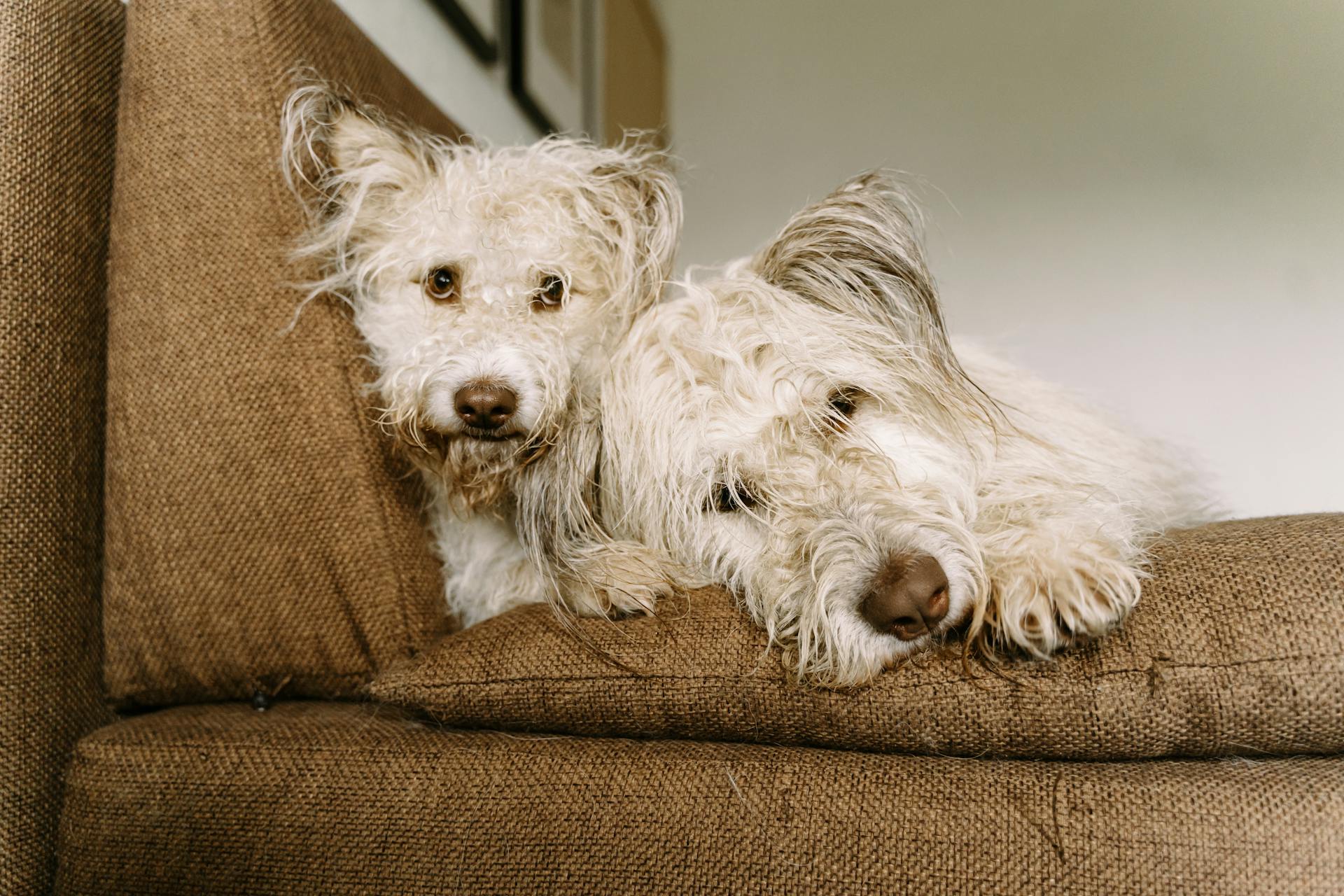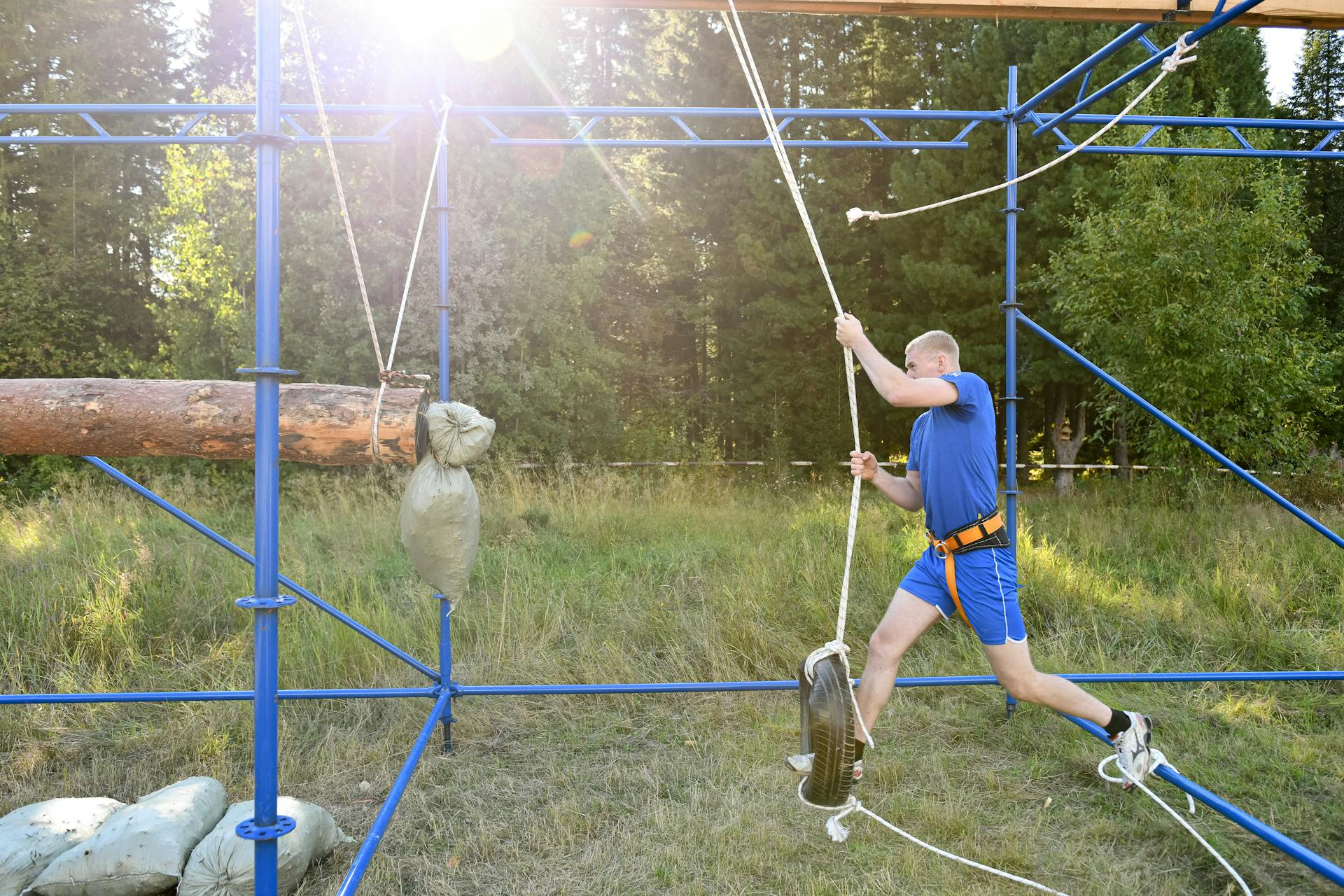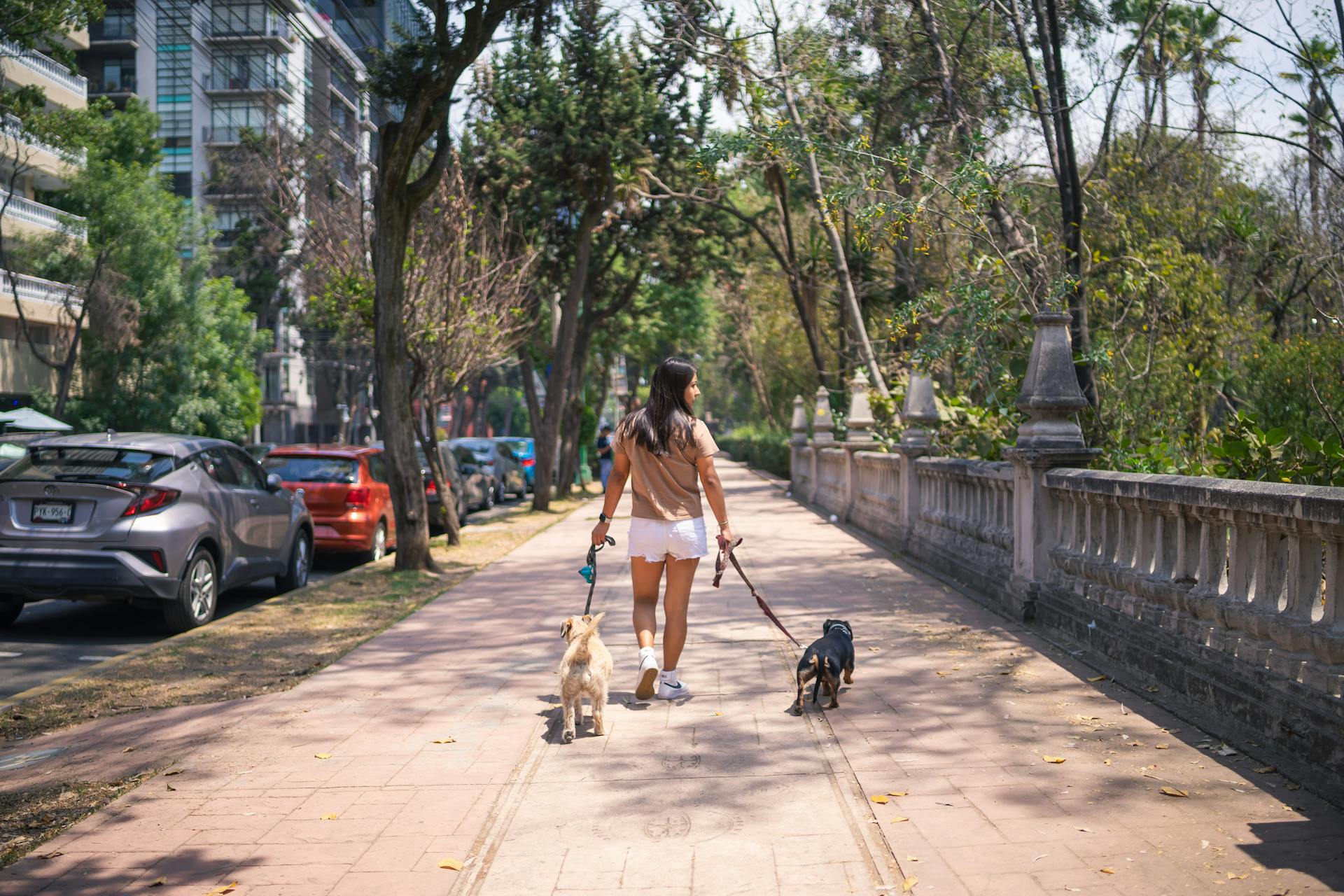
Dogs can grow out of separation anxiety issues, but it's not a guarantee.
Some dogs may outgrow separation anxiety due to maturity, as it's common in puppies.
However, separation anxiety can persist into adulthood if not addressed properly.
With consistent training and patience, dogs can learn to manage their separation anxiety and feel more comfortable when left alone.
What Is?
Separation anxiety is a unique phenomenon that occurs when your pet is left alone, causing them to exhibit excessive and panicked behavior.
It's like they're thinking, "You could be gone forever." Dr. Nellie Goetz, a veterinarian, explains that animals live in the present moment, so when you leave, they don't know when you'll return.
Symptoms of separation anxiety can vary, but they're often extreme and include destructive behavior like tearing through a crate or couch.
Think of it like a panic attack, says Patricia McConnell, Ph.D., a Certified Applied Animal Behaviorist. Your dog is terrified to be in the house alone.
Separation anxiety is not just a phase, it's a real issue that requires attention and understanding.
It's not about boredom or generalized anxiety, but a specific fear of being left alone.
Causes and Triggers
Separation anxiety in dogs can be caused by a variety of factors, including being forced into an unfamiliar and frightening experience, being deprived of social and environmental exposure until 14 weeks of age, and having a history of abandonment or neglect.
Traumatic experiences, genetics, and age-related health conditions like dementia can also contribute to the development of separation anxiety. Any illness or painful physical condition can increase anxiety and contribute to the development of fears, phobias, and anxieties.
Some common triggers for separation anxiety include being locked in a crate, having multiple owners over time, being rehomed, or experiencing prior neglect. A single traumatic event in the owner's absence, such as a house robbery, can also lead to separation anxiety.
Causes
Causes of separation anxiety in dogs can be complex and varied. It's not just about being left alone, but rather a combination of factors that contribute to a dog's anxiety.
One common cause is early life experience, where a dog is exposed to significant changes or traumatic events, such as being abandoned or separated from their mother or littermates too soon. This can lead to a lack of social confidence and increase the risk of separation anxiety.
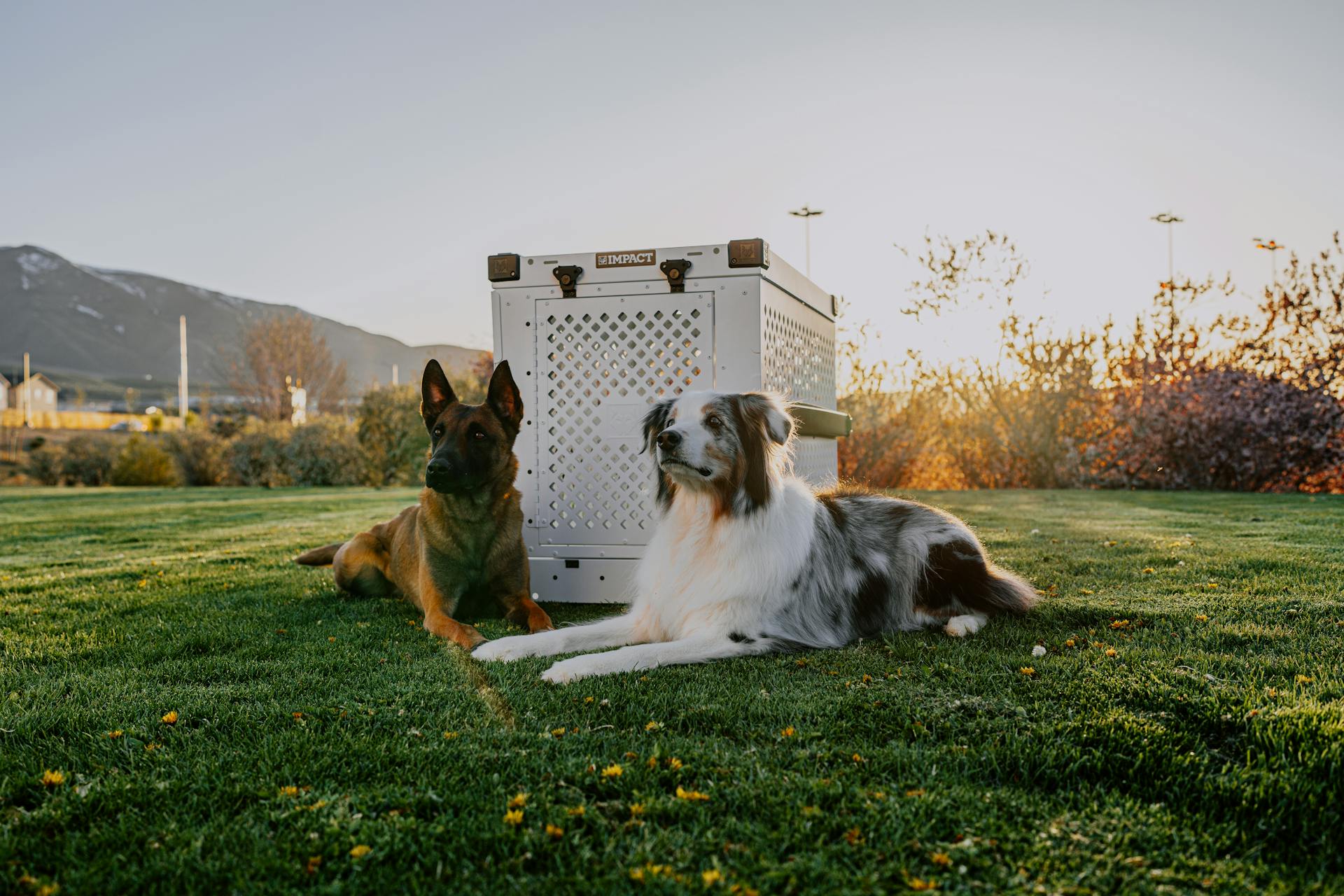
Trauma can take many forms, including abuse from previous owners or early weaning. While not all dogs who experience these early life events will develop separation anxiety, they are at a higher risk than others.
Genetics also play a role, with some research showing that genetic markers can affect the regulation of neurotransmitters and hormones involved in stress and anxiety responses. If a dog has a parent or close relative with a history of separation anxiety, it increases the likelihood that they will inherit the same issue.
Some dog breeds are more prone to separation anxiety than others, with Labrador Retrievers being a top example. Their highly social nature makes them more susceptible to anxiety when left alone for extended periods.
Here are some common causes of separation anxiety in dogs:
- Early life experience, such as being abandoned or separated from their mother or littermates too soon
- Trauma, including abuse from previous owners or early weaning
- Genetics, with some breeds being more prone to separation anxiety
- Attachment issues, such as the loss of a family member or a change in family structure
- Life changes, such as a sudden switch in schedule or a move to a new house
5 Common Triggers
Dogs thrive on routine and predictability, and changes in their environment can cause distress. Changes in routine or surroundings can be a common trigger for separation anxiety in dogs.
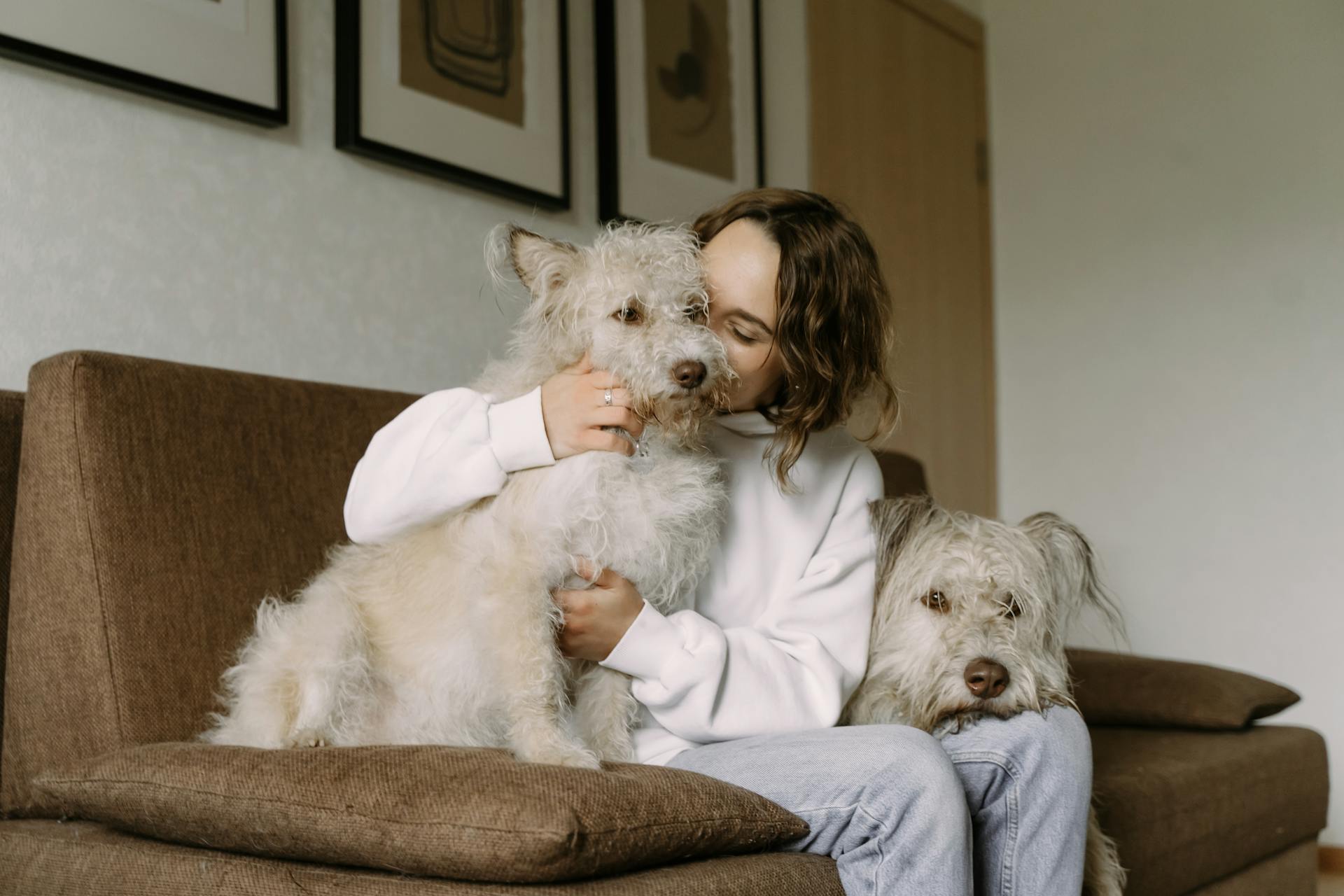
A change in feeding times, interaction with their owner, or even their place of confinement can be unsettling for some dogs. This predictability factor is crucial for their emotional well-being.
For some dogs, even a change in their owner's work routine can create problems. This can disrupt their sense of security and stability.
A change of home or primary caregivers can also make a difference and ruin the predictability factor for dogs. This can be particularly challenging for dogs that are strongly attached to their owners.
Dogs can become accustomed to their owner's daily schedule, and changes to this routine can cause anxiety.
Symptoms and Diagnosis
Dogs with separation anxiety exhibit a range of distressing behaviors when left alone, including trembling or salivating, digging and scratching at doors or windows, and destructive chewing.
Some dogs may also exhibit anxious behaviors like pacing, whining, or trembling while their owners are preparing to leave or while they're gone. These behaviors can be a sign that your dog is suffering from separation anxiety.
Common symptoms of separation anxiety in dogs include excessive barking or howling, destructive acts like chewing or digging, and accidents in the house, such as urinating or defecating.
Here are some common symptoms of separation anxiety in dogs:
- Anxious behaviors like pacing, whining, or trembling while you’re gone or as you prepare to leave.
- Excessive barking or howling.
- Destructive acts, such as chewing or digging, particularly around doors or windows.
- Accidents in the house – urinating or defecating.
- Excessive salivation, drooling, or panting.
- Desperate and prolonged attempts to escape confinement, potentially ending in serious injury.
Keep in mind that dogs can exhibit stress in many ways, and it's up to you to recognize the signs and take action to help your dog feel more comfortable when you're away.
What Are the Symptoms of?
Dogs with separation anxiety exhibit a range of distressing behaviors when left alone. These can include trembling or salivating, digging and scratching at doors or windows, destructive chewing, howling, barking or whining, and even urination and defecation, even in house-trained dogs.
Some common symptoms of separation anxiety in dogs include anxious behaviors like pacing, whining, or trembling while their owners are gone or preparing to leave. Excessive barking or howling can also be a sign, as can destructive acts like chewing or digging, particularly around doors or windows.
A different take: Why Is My Female Dog Whining at Night
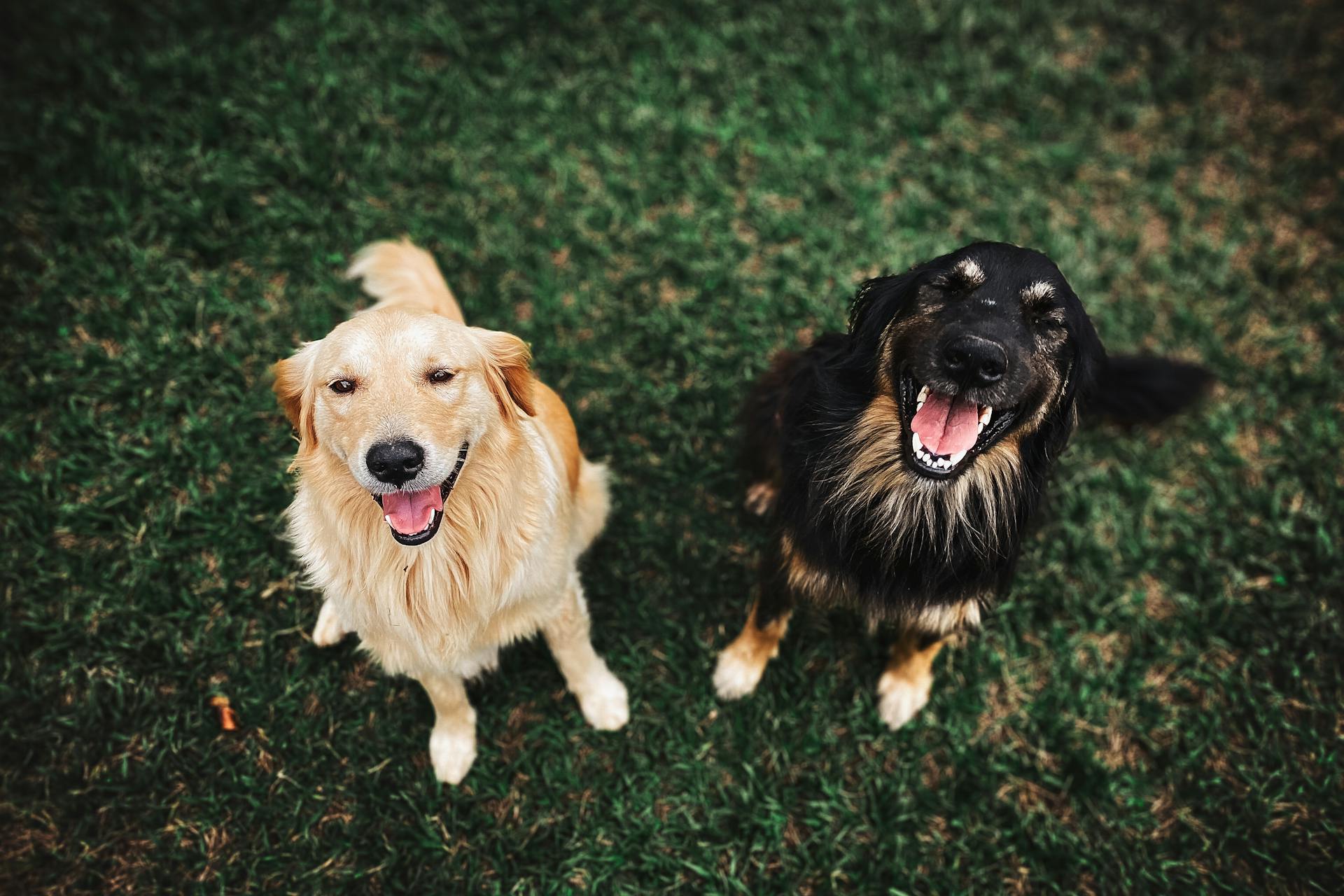
Accidents in the house, such as urinating or defecating, can also be a symptom of separation anxiety. Additionally, excessive salivation, drooling, or panting can be indicative of this issue.
Dogs may also exhibit desperate and prolonged attempts to escape confinement, potentially ending in serious injury. In some cases, a dog's symptoms may be mild, such as trembling, tail-tucking, hiding, reduced activity, and passive escape behaviors.
Here are some common symptoms of separation anxiety in dogs:
- Trembling or salivating
- Digging and scratching at doors or windows
- Destructive chewing
- Howling, barking or whining
- Urination and defecation
- Excessive barking or howling
- Destructive acts like chewing or digging
- Accidents in the house
- Excessive salivation, drooling, or panting
- Desperate attempts to escape confinement
Diagnosing
Diagnosing your furry friend's symptoms is a crucial step in finding the right treatment. Your veterinarian will first want to rule out other conditions that might be causing the behavior, such as brain, thyroid or adrenal disease.
Blood tests are a common tool used to rule out or confirm possible underlying medical conditions.
Playing It Cool
Don't encourage overly clingy behavior in your puppy. Instead, develop independence by teaching your puppy to be on their own in another room, even when you're at home.
Additional reading: When Do Dogs Grow Out of the Puppy Stage
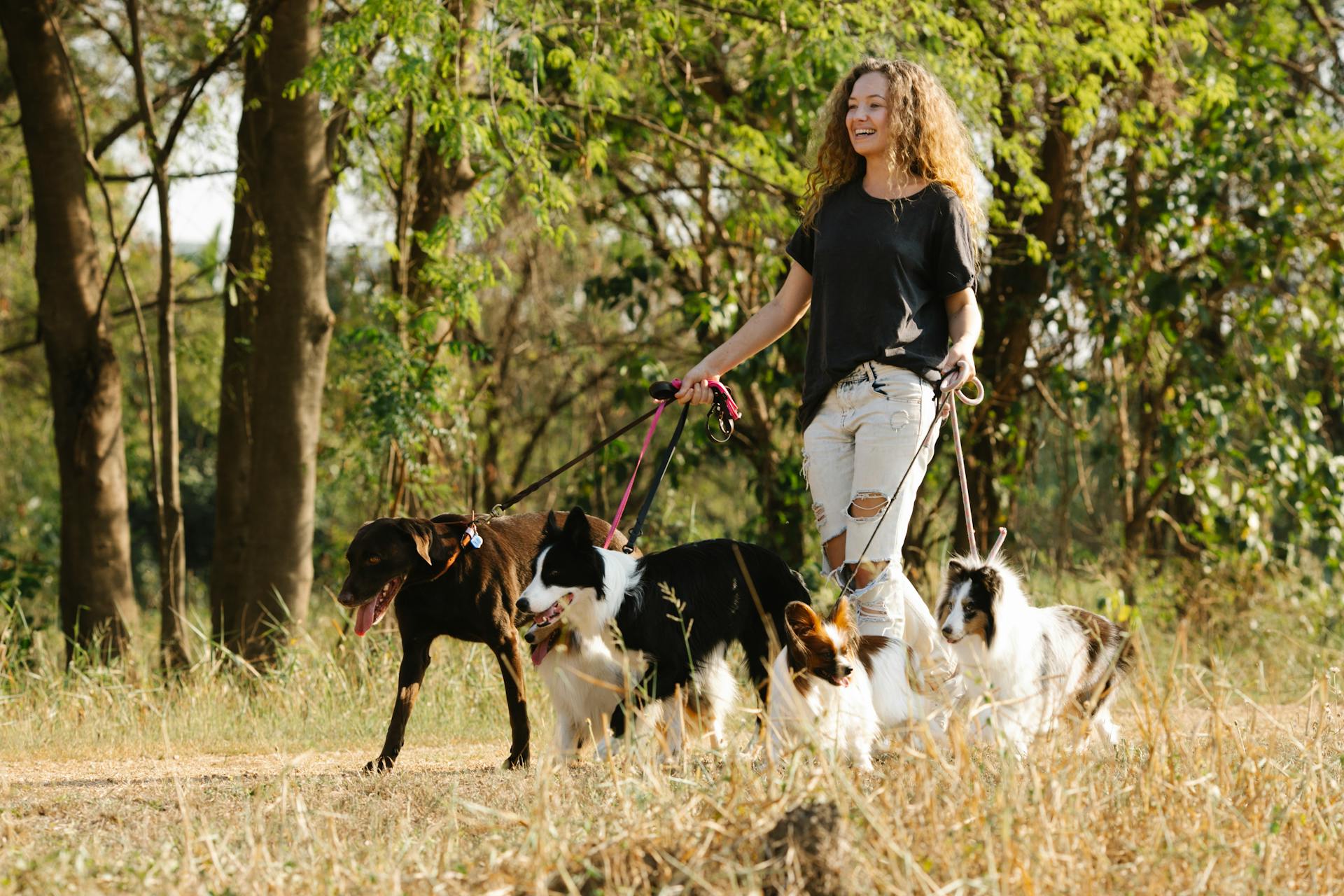
Teaching a solid stay is another way to battle excessive attachment. Start with short lengths of time, and once your puppy can stay for several minutes, you can begin to leave the room.
You should be able to leave your puppy's sight while they stay for five or ten minutes. This will help them learn to relax and be calm when you're not around.
It's also important to play it cool when you leave or return to your home. You can greet your dog with love, but don't get over-the-top emotional. Keep things calm and without fanfare.
If you get worked up, your dog will see your comings and goings as a major event to worry over. This can make their separation-related distress worse.
Here are some key things to remember when leaving or returning home:
• Greet your dog calmly and without fanfare
• Keep goodbyes and hellos low-key
• Avoid getting over-the-top emotional
• Don't punish your dog if you come home to damage or if your dog has soiled
For your interest: Dogs without Separation Anxiety
Treatment and Management
Treatment for separation anxiety in dogs can take months, and although many dogs can go on to live stress-free lives, the behaviors may resurface during other times of transition.
Your veterinarian will make recommendations based on your individual dog's fear trigger, and may prescribe anti-anxiety medication in addition to recommending management techniques and behavior modification exercises.
Most forms of treatment will be done over the long-term, and could possibly span several years. Minimum treatment averages four to six months.
Desensitization and counter-conditioning are most effective if the fear, phobia or anxiety is treated early. The goal is to decrease the reaction to a specific stimulus, such as being left alone.
Medications that reduce anxiety, frustration, and panic are available, and can be helpful in conjunction with behavior modification exercises.
A consistent routine is essential in helping your dog gradually improve and become more comfortable with being alone. Stick to a regular schedule for feeding, exercise, and alone time.
A fresh viewpoint: Treatment for Dog Aggression
Some dogs benefit from taking medication every day, while others take medication as needed. Your veterinarian will examine your dog and perform some diagnostic testing to determine whether medication is appropriate.
A safe resting spot, such as a settle mat, can help your dog learn to relax in a variety of environmental settings. Encourage calmness when your dog appears distressed, and distract him and redirect his attention.
Hospitalization may be the best choice if your dog has extreme panic and separation anxiety and needs to be protected until medications can become effective.
Some important tips for training dogs to tolerate your departure include:
- Identify and isolate cues that appear to trigger distress, such as barking, pacing, or hiding, and try to prepare so that your dog is not already distressed when you leave.
- Provide safe toys for your dog to enjoy when you are gone, and scatter food toys around the house if your dog is active.
- Avoid rushing, and prepare for your departure calmly. Before walking out the door, sit for a few minutes and read or relax.
- Begin with short departures and return fairly quickly, before your dog appears distressed.
- Gradually and randomly increase departures if they are well tolerated.
It's essential to be patient and consistent when helping your dog overcome separation anxiety. Stick to a regular schedule and provide a safe and predictable environment for your dog.
Prevention and Overcoming
Preventing separation anxiety in dogs can be challenging, but it's not always preventable, despite your best efforts. Separation anxiety in puppies and dogs isn't always preventable, despite your best efforts.
To prepare your dog for being alone, it's essential to teach her that she is safe, even when she's not in your direct view. To train your dog to be comfortable with confinement, begin by using a gate or crate so that she cannot always follow you.
Any change in the household or home environment can reduce a dog's comfort with being alone. Medical conditions can also trigger distress, such as pain or diseases that cause an increase in the urgency to urinate or defecate.
Overcoming Loneliness
Prevention is key, but what if you've already noticed a change in your dog's behavior? Any change in the household or home environment can reduce a dog's comfort with being alone.
Construction projects at home or in the neighborhood can trigger anxiety, so try to minimize disruptions. Medical conditions can also trigger distress, especially if your dog is experiencing pain or has a disease that causes an urgent need to urinate or defecate.
If this caught your attention, see: Will Dog's Hair Grow Back after Scab?
Consult your veterinarian to schedule an exam if your dog exhibits a sudden onset of separation-related behavioral concerns. Senior dogs may develop cognitive dysfunction syndrome, a condition related to brain aging, which can lead to anxiety and a loss of learned behaviors.
Treatment can slow the process and address the underlying anxiety, but it's essential to work with a Certified Applied Animal Behaviorist or a veterinary behaviorist to develop a customized plan. With patience and a positive attitude, you can reduce your dog's suffering and put separation anxiety stress behind you.
If you notice signs of distress, it's crucial to consult with your veterinarian immediately. A camera or monitor can help you keep an eye on your dog while you're away, and you can always hire a pet sitter for the short term if needed.
It's also essential to provide your dog with a comfortable and safe space, even when you're not home. Leave a food-filled toy or some standard-quality toys to keep them entertained, and make sure they have a quiet and cozy spot to relax.
Expand your knowledge: Healthy Mind Canine - Separation Anxiety Training
Overcoming Phobias
A phobia is a persistent and excessive fear of a specific stimulus, which can be a challenge to overcome. It's essential to work with your veterinarian to determine the root cause of the phobia.
Your veterinarian will help you develop a plan to address the phobia, taking into account the severity of the behaviors.
Frequently Asked Questions
How long does dog separation anxiety last?
Dog separation anxiety can last anywhere from 4 to 6 weeks in transitional cases, but in some cases, it can be permanent
Sources
- https://www.humanesociety.org/resources/separation-anxiety-dogs
- https://www.akc.org/expert-advice/training/dog-separation-anxiety/
- https://www.petmd.com/dog/conditions/behavioral/c_dg_fears_phobia_anxiety
- https://suburban-k9.com/separation-anxiety-in-dogs/
- https://vcahospitals.com/know-your-pet/dog-behavior-problems---separation-anxiety-in-dogs---synopsis
Featured Images: pexels.com
